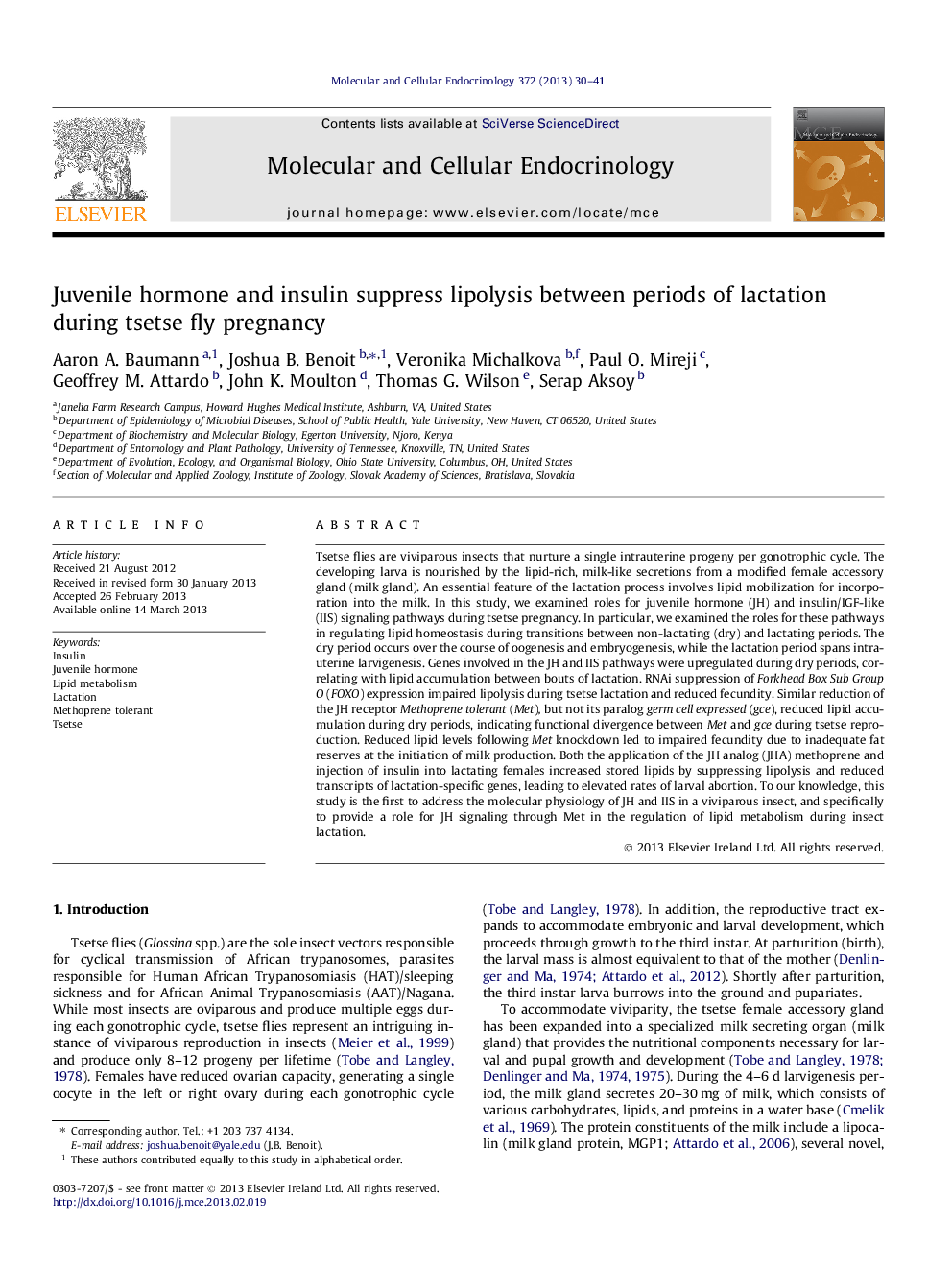| کد مقاله | کد نشریه | سال انتشار | مقاله انگلیسی | نسخه تمام متن |
|---|---|---|---|---|
| 2196163 | 1550905 | 2013 | 12 صفحه PDF | دانلود رایگان |

• Tsetse flies possess two juvenile hormone receptors, Methoprene-tolerant and germ cell expressed, similar to Drosophila.
• Juvenile hormone and insulin promote lipid accumulation in tsetse flies.
• Juvenile hormone and insulin leads to increased fat storage during non-lactating periods.
• Our results indicate the insulin and juvenile hormone are key to nutritional mobilization during tsetse lactation.
Tsetse flies are viviparous insects that nurture a single intrauterine progeny per gonotrophic cycle. The developing larva is nourished by the lipid-rich, milk-like secretions from a modified female accessory gland (milk gland). An essential feature of the lactation process involves lipid mobilization for incorporation into the milk. In this study, we examined roles for juvenile hormone (JH) and insulin/IGF-like (IIS) signaling pathways during tsetse pregnancy. In particular, we examined the roles for these pathways in regulating lipid homeostasis during transitions between non-lactating (dry) and lactating periods. The dry period occurs over the course of oogenesis and embryogenesis, while the lactation period spans intrauterine larvigenesis. Genes involved in the JH and IIS pathways were upregulated during dry periods, correlating with lipid accumulation between bouts of lactation. RNAi suppression of Forkhead Box Sub Group O (FOXO) expression impaired lipolysis during tsetse lactation and reduced fecundity. Similar reduction of the JH receptor Methoprene tolerant (Met), but not its paralog germ cell expressed (gce), reduced lipid accumulation during dry periods, indicating functional divergence between Met and gce during tsetse reproduction. Reduced lipid levels following Met knockdown led to impaired fecundity due to inadequate fat reserves at the initiation of milk production. Both the application of the JH analog (JHA) methoprene and injection of insulin into lactating females increased stored lipids by suppressing lipolysis and reduced transcripts of lactation-specific genes, leading to elevated rates of larval abortion. To our knowledge, this study is the first to address the molecular physiology of JH and IIS in a viviparous insect, and specifically to provide a role for JH signaling through Met in the regulation of lipid metabolism during insect lactation.
Journal: Molecular and Cellular Endocrinology - Volume 372, Issues 1–2, 15 June 2013, Pages 30–41